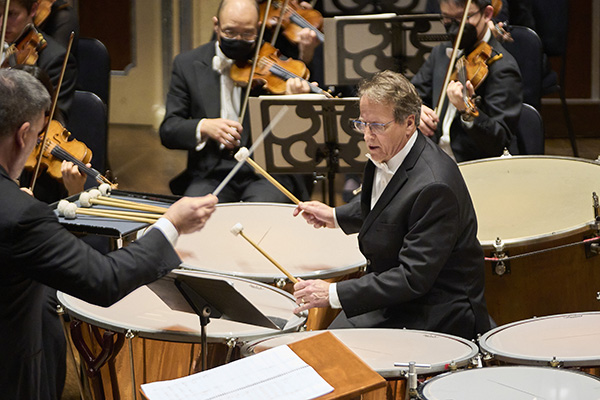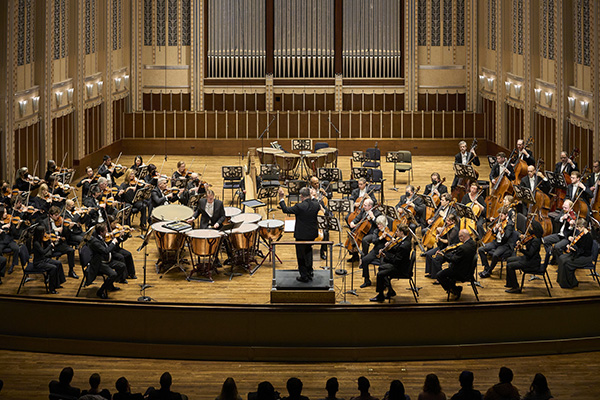by Daniel Hathaway
Rebounding with vigor on January 5 from its loaded holiday schedule while other ensembles were still in recovery mode, The Cleveland Orchestra gave a thoroughly enjoyable concert of completely unrelated works, including a new concerto by James Oliverio featuring principal timpani Paul Yancich, and not-so-often performed symphonies by Joseph Haydn and Carl Nielsen.
Presiding over this interesting stew like an adventurous chef, guest conductor Alan Gilbert threw in a surprising ingredient or two that the smallish audience of 800 lapped up as if hungry for something both piquant and nourishing after a diet of Noëls.
The Mandel Hall stage was full of drums — the normal number at the back of the orchestra, plus seven more set in a tight circle where the first violins usually hold forth — for the opening work, Oliverio’s Legacy Ascendant, Concerto for Timpani and Strings, commissioned by The Cleveland Orchestra.


Yancich was superb in his solo role, out front but unobtrusive, always lyrical and musically sensitive, and his long decrescendo that ended the piece was unusually expressive.

There always seemed to be another repetition waiting in the wings, and if the conductor “lost track,” the concertmaster leapt up and reminded him. This went back and forth several times, Victor Borge-like, and you had to be there to appreciate the humor.
Haydn’s symphonies abound in wonderful wind writing and the Orchestra, many of whose principal players had turned their duties over to their assistants, sounded clear and played with finesse. Flutist Jessica Sindell was a standout, as was oboist Jeffrey Rathbun in the third movement Trio.
Nielsen’s four-movement Sinfonia espansiva ended the evening with glorious sonorities and some surprises, beginning with slashing opening gestures and continuing in a number of different stylistic directions. A splendidly balanced horn quartet launched the second movement, which continued with the arresting effect of soprano and baritone solo voices (Liv Redpath and Justin Austin, pictured), singing wordlessly from the middle of the string sections. Those vocalists were replaceable, Nielsen noted, by clarinets!
Photos by Roger Mastroianni, courtesy of The Cleveland Orchestra.
Published on ClevelandClassical.com January 11, 2023.
Click here for a printable copy of this article





